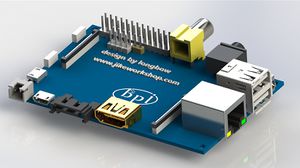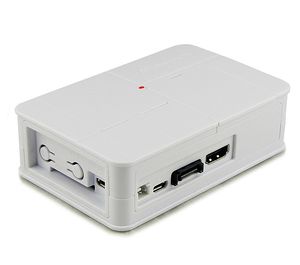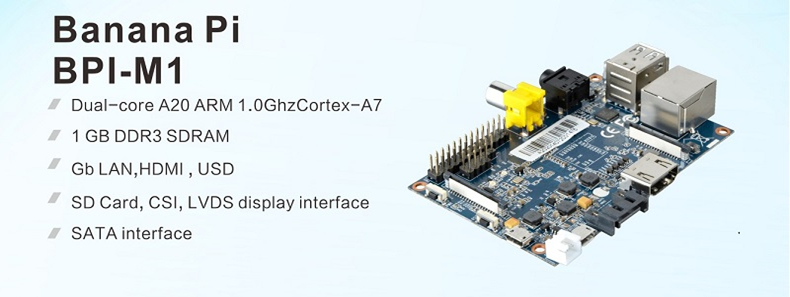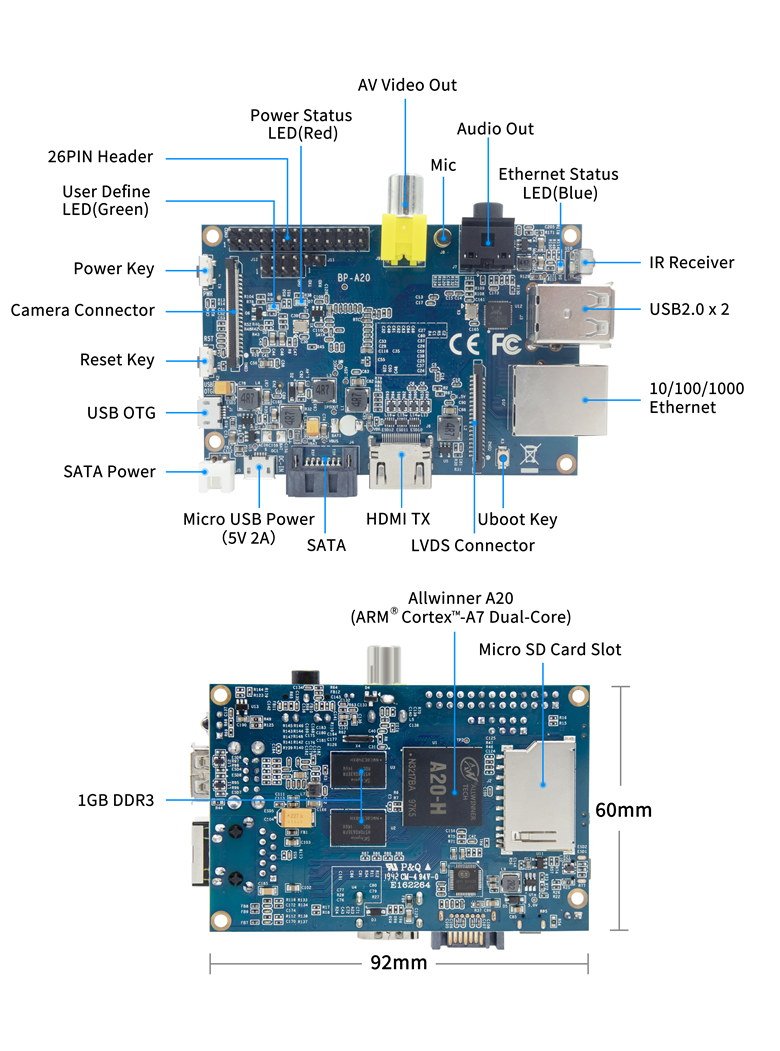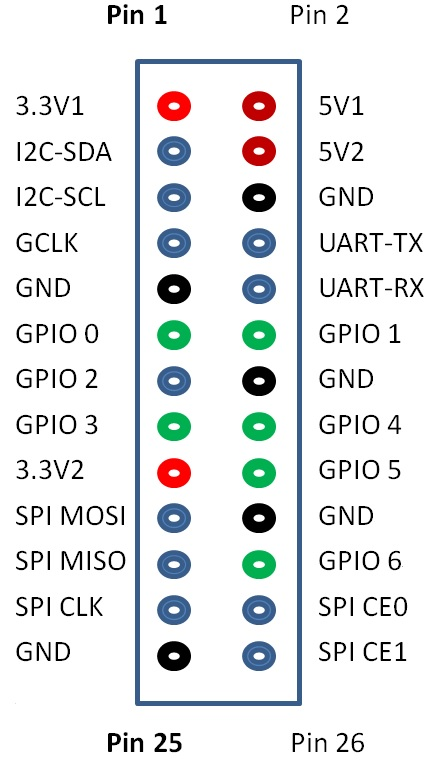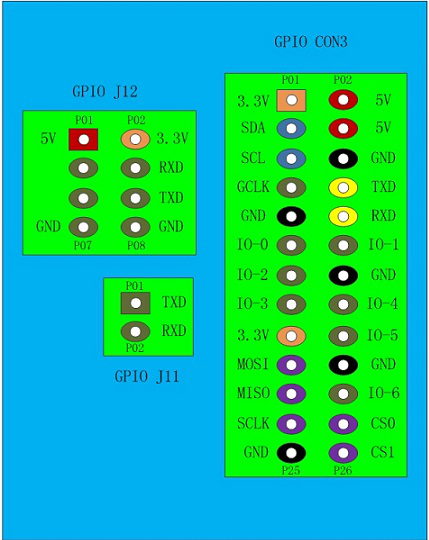Difference between revisions of "香蕉派 BPI-M1"
JackZengWiki (talk | contribs) (Created page with "en:Banana_Pi_BPI-M1") |
|||
| (22 intermediate revisions by the same user not shown) | |||
| Line 1: | Line 1: | ||
[[en:Banana_Pi_BPI-M1]] | [[en:Banana_Pi_BPI-M1]] | ||
| + | |||
| + | =介绍= | ||
| + | [[File:Banana_pi_BPI-M1_1.jpg|thumb|[[香蕉派 BPI-M1]] 采用全志科技 A20 芯片设计]] | ||
| + | [[File:Banana_pi_BPI-M1+_1.jpg|thumb|[[香蕉派 BPI-M1+]] 采用全志科技 A20 芯片设计]] | ||
| + | [[File:BPI-M2_zero_11.JPG|thumb|[[香蕉派 BPI-M2 ZERO]] 采用全志科技 H3 芯片设计]] | ||
| + | [[File:BPI-F2_zero_1.JPG|thumb|[[香蕉派 BPI-P2 Zero]] 采用全志科技 H3 芯片设计]] | ||
| + | [[File:Banana_pi_BPI-M2+_2.jpg|thumb|[[香蕉派 BPI-M2+]] 采用全志科技 H3 芯片设计]] | ||
| + | [[File:Banana_pi_bpi-m2_magic_5.JPG|thumb|[[香蕉派 BPI-M2M ]] 采用全志科技 R16 芯片设计]] | ||
| + | [[File:Banana_pi_BPI-M2_Berry_5.JPG|thumb|[[香蕉派 BPI-M2 Berry]] 采用全志科技 A40i 芯片设计]] | ||
| + | [[File:Banana_pi_BPI-M2_Ultra_4.JPG|thumb|[[香蕉派 BPI-M2U]] 采用全志科技 A40i 芯片设计]] | ||
| + | [[File:Banana_pi_BPI-M64_1.jpg|thumb|[[香蕉派 BPI-M64]] 采用全志科技 A64 芯片设计]] | ||
| + | [[File:Banana_pi_BPI-M3_1.jpg|thumb|[[香蕉派 BPI-M3]] 采用全志科技 A83T 芯片设计]] | ||
| + | |||
| + | [[File:BPI-M1_3d.jpg|thumb|BPI-M1 3D ]] | ||
| + | [[File:White-2.JPG|thumb|BPI-M1 with plastic case]] | ||
| + | [[File:MultiQB_front.jpg|thumb|BPI-M1/M1+ for BPI 4.0 [[Successful case]] : smart home gateway]] | ||
| + | [[File:IMG_3036.JPG|thumb|BPI-M1/M1+ for BPI 4.0 [[Successful case]] :3G Information security terminal]] | ||
| + | [[File:IMG_3085.JPG|thumb|BPI-M1/M1+ for BPI 4.0 [[Successful case]] :4G Industrial safety tablets]] | ||
| + | |||
| + | |||
| + | |||
| + | 香蕉派 BPI-M1是一种商用卡片大小和低功耗的单板计算机,具有高性能全志A20双核处理器(1ghz)、1gb DDR3 SDRAM、千兆以太网、SATA、USB和HDMI连接。它可以运行多种操作系统,包括Android, Lubuntu, Ubuntu, Debian和Raspbian。 | ||
| + | |||
| + | 香蕉派 BPI-M1是香蕉派团队推出的第一款开源硬件,也是香蕉派累积销量最多的一款经典产品。现在还有很多商业客户应用在各种项目上。 | ||
| + | |||
| + | [[File:A_BPI-M1.jpg]] | ||
| + | |||
| + | ==关键特性== | ||
| + | |||
| + | * 全志A20 Dual-core 1.0GHz CPU(A40i芯片可选) | ||
| + | * Mali-400 MP2 with Open GL ES 2.0/1.1. | ||
| + | * 1 GB DDR3 memory. | ||
| + | * 1x SATA interface. | ||
| + | * 1x Gigabit LAN | ||
| + | * 1x USB otg and 2x USB 2.0 | ||
| + | * 1X MIC | ||
| + | * AV vide out | ||
| + | * HDMI out | ||
| + | * IR | ||
| + | * CSI camera interface | ||
| + | * DSI display interface | ||
| + | * 26 PIN gpio | ||
| + | |||
| + | ==开始使用== | ||
| + | *如何烧录镜像与启动系统 :[[快速上手 香蕉派镜像烧录与系统启动]] | ||
| + | *使用BPI-M1 进行开发: [[快速上手 香蕉派 BPI-M1]] | ||
| + | |||
| + | =硬件= | ||
| + | ==硬件接口示意== | ||
| + | [[File:BPI-M1_interface.jpg]] | ||
| + | |||
| + | ==硬件规格== | ||
| + | |||
| + | {| class="wikitable" | ||
| + | |- | ||
| + | | style="background: PaleTurquoise; color: black" colspan="4"| '''Banana Pi BPI-M1硬件规格''' | ||
| + | |- | ||
| + | | CPU|| A20 ARM Cortex -A7 Dual-Core (option:allwinner A40i) | ||
| + | |- | ||
| + | | GPU|| ARM Mali 400 MP2; Complies with OpenGL ES 2.0/1.1 | ||
| + | |- | ||
| + | | Memory|| 1GB DDR3 | ||
| + | |- | ||
| + | | Network|| 10/100/1000 Ethernet [[Modular connector|8P8C]] ([[1000BASE-T]]) | ||
| + | |- | ||
| + | | Video Input|| A CSI input connector allows for the connection of a designed camera module | ||
| + | |- | ||
| + | | Video Outputs|| HDMI, CVBS, LVDS/RGB | ||
| + | |- | ||
| + | | Audio Outputs|| 3.5mm jack and HDMI | ||
| + | |- | ||
| + | | Power Source|| 5 volts DC via Micro USB or GPIO | ||
| + | |- | ||
| + | | USB 2.0 ports|| 2 (direct from Allwinner A20 chip) | ||
| + | |- | ||
| + | | GPIO|| GPIO, UART, I2C BUS, SPI BUS, WITH TWO CHIP SELECTS, [[CAN bus]], ADC, PWM, +3.3V, +5V, GND | ||
| + | |- | ||
| + | | LED|| Power Key & 8P8C | ||
| + | |- | ||
| + | | Storage|| SATA 2.0, | ||
| + | |} | ||
| + | |||
| + | ==GPIO PIN 定义 == | ||
| + | |||
| + | Banana Pi BPI-M1 has a 26-pin GPIO header that matches that of the Model A and Model B Raspberry Pi. Following is the Banana Pi GPIO Pinout: | ||
| + | |||
| + | [[File:BPI-M1_26_pin.png]] | ||
| + | |||
| + | Note: 5V1,5V2 only support output,not support input | ||
| + | |||
| + | '''CSI Camera Connector specification:''' | ||
| + | |||
| + | CSI Camera Connector The CSI Camera Connector is a 40-pin FPC connector which can connect external camera module with proper signal pin mappings. The pin definitions of the CSI interface are shown as below. This is marked on the Banana Pi board as “CON1″. | ||
| + | |||
| + | {| class="wikitable" | ||
| + | |- | ||
| + | | style="background: PaleTurquoise; color: black" colspan="4"| '''40 PIN GPIO of Banana pi BPI-M1''' | ||
| + | |- | ||
| + | | CSI GPIO Pin || Pin Name || GPIO | ||
| + | |- | ||
| + | | CON1 P01 || LINEINL || | ||
| + | |- | ||
| + | | CON1 P02 || LINEINR || | ||
| + | |- | ||
| + | | CON1 P03 || VCC-CSI || | ||
| + | |- | ||
| + | | CON1 P04 || ADC\_X1 || | ||
| + | |- | ||
| + | | CON1 P05 || GND || | ||
| + | |- | ||
| + | | CON1 P06 || ADC\_X2 || | ||
| + | |- | ||
| + | | CON1 P07 || FMINL || | ||
| + | |- | ||
| + | | CON1 P08 || ADC\_Y1 || | ||
| + | |- | ||
| + | | CON1 P09 || FMINR || | ||
| + | |- | ||
| + | | CON1 P10 || ADC\_Y2 || | ||
| + | |- | ||
| + | | CON1 P11 || GND || | ||
| + | |- | ||
| + | | CON1 P12 || CSI-FLASH || PH17 | ||
| + | |- | ||
| + | | CON1 P13 || LRADC0 || | ||
| + | |- | ||
| + | | CON1 P14 || TWI1-SDA || PB19 | ||
| + | |- | ||
| + | | CON1 P15 || LRADC1 || | ||
| + | |- | ||
| + | | CON1 P16 || TWI1-SCK || PB18 | ||
| + | |- | ||
| + | | CON1 P17 || CSI-D0 || PE4 | ||
| + | |- | ||
| + | | CON1 P18 || CSI0-STBY-EN || PH19 | ||
| + | |- | ||
| + | | CON1 P19 || CSI0-D1 || PE5 | ||
| + | |- | ||
| + | | CON1 P20 || CSI-PCLK || PE0 | ||
| + | |- | ||
| + | | CON1 P21 || CSI-D2 || PE6 | ||
| + | |- | ||
| + | | CON1 P22 || CSI0-PWR-EN || PH16 | ||
| + | |- | ||
| + | | CON1 P23 || CSI-D3 || PE7 | ||
| + | |- | ||
| + | | CON1 P24 || CSI0-MCLK || PE1 | ||
| + | |- | ||
| + | | CON1 P25 || CSI-D4 || PE8 | ||
| + | |- | ||
| + | | CON1 P26 || CSI0-RESET\# || PH14 | ||
| + | |- | ||
| + | | CON1 P27 || CSI-D5 || PE9 | ||
| + | |- | ||
| + | | CON1 P28 || CSI-VSYNC || PE3 | ||
| + | |- | ||
| + | | CON1 P29 || CSI-D6 || PE10 | ||
| + | |- | ||
| + | | CON1 P30 || CSI-HSYNC || PE2 | ||
| + | |- | ||
| + | | CON1 P31 || CSI-D7 || PE11 | ||
| + | |- | ||
| + | | CON1 P32 || CSI1-STBY-EN || PH18 | ||
| + | |- | ||
| + | | CON1 P33 || RESET\# || | ||
| + | |- | ||
| + | | CON1 P34 || CSI1-RESET\# || PH13 | ||
| + | |- | ||
| + | | CON1 P35 || CSI-IO0 || PH11 | ||
| + | |- | ||
| + | | CON1 P36 || HPR || | ||
| + | |- | ||
| + | | CON1 P37 || HPL || | ||
| + | |- | ||
| + | | CON1 P38 || IPSOUT || | ||
| + | |- | ||
| + | | CON1 P39 || GND || | ||
| + | |- | ||
| + | | CON1 P40 || IPSOUT || | ||
| + | |- | ||
| + | |} | ||
| + | |||
| + | |||
| + | '''LVDS \(LCD display interface\)''' | ||
| + | |||
| + | The LVDS Connector is a 40-pin FPC connector which can connect external LCD panel \(LVDS\) and touch screen \(I2C\) module as well. The pin definitions of this connector are shown as below. This is marked on the Banana Pi board as “CON2″. | ||
| + | |||
| + | {| class="wikitable" | ||
| + | |- | ||
| + | | style="background: PaleTurquoise; color: black" colspan="4"| '''LVDS GPIO of Banana pi BPI-M1''' | ||
| + | |- | ||
| + | | LVDS Pin || Pin Name || Multiplex Function Select || GPIO | ||
| + | |- | ||
| + | | || ||Multi 1 || Multi 2 | ||
| + | |- | ||
| + | | CON2 P01 || IPSOUT\(5V output\) || || | ||
| + | |- | ||
| + | | CON2 P02 || TWI3-SDA || || PI1 | ||
| + | |- | ||
| + | | CON2 P03 || IPSOUT\(5V output\) || || | ||
| + | |- | ||
| + | | CON2 P04 || TWI3-SCK || || PI0 | ||
| + | |- | ||
| + | | CON2 P05 || GND || || | ||
| + | |- | ||
| + | | CON2 P06 || LCD0-IO0 || || PH7 | ||
| + | |- | ||
| + | | CON2 P07 || LCDIO-03 || || PH12 | ||
| + | |- | ||
| + | | CON2 P08 || LCD0-IO1 || || PH8 | ||
| + | |- | ||
| + | | CON2 P09 || LCD0-D0 || LVDS0-VP0 || PD0 | ||
| + | |- | ||
| + | | CON2 P10 || PWM0 || || PB2 | ||
| + | |- | ||
| + | | CON2 P11 || LCD0-D1 || LVDS0-VN0 || PD1 | ||
| + | |- | ||
| + | | CON2 P12 || LCD0-IO2 || || PH9 | ||
| + | |- | ||
| + | | CON2 P13 || LCD0-D2 || LVDS0-VP1 || PD2 | ||
| + | |- | ||
| + | | CON2 P14 || LCD0-DE || || PD25 | ||
| + | |- | ||
| + | | CON2 P15 || LCD0-D3 || LVDS0-VN1 || PD3 | ||
| + | |- | ||
| + | | CON2 P16 || LCD0-VSYNC || || PD27 | | ||
| + | |- | ||
| + | | CON2 P17 || LCD0-D4 || LVDS0-VP2 || PD4 | ||
| + | |- | ||
| + | | CON2 P18 || LCD0-HSYNC || || PD26 | | ||
| + | |- | ||
| + | | CON2 P19 || LCD0-D5 || LVDS0-VN2 || PD5 | ||
| + | |- | ||
| + | | CON2 P20 || LCD0-CS || || PH6 | | ||
| + | |- | ||
| + | | CON2 P21 || LCD0-D6 || LVDS0-VPC || PD6 | ||
| + | |- | ||
| + | | CON2 P22 || LCD0-CLK || || PD24 | ||
| + | |- | ||
| + | | CON2 P23 || LCD0-D7 || LVDS0-VNC || PD7 | ||
| + | |- | ||
| + | | CON2 P24 || GND || || | ||
| + | |- | ||
| + | | CON2 P25 || LCD0-D8 || LVDS0-VP3 || PD8 | ||
| + | |- | ||
| + | | CON2 P26 || LCD0-D23 || || PD23 | ||
| + | |- | ||
| + | | CON2 P27 || LCD0-D9 || LVDS0-VN3 || PD9 | ||
| + | |- | ||
| + | | CON2 P28 || LCD0-D22 || || PD22 | ||
| + | |- | ||
| + | | CON2 P29 || LCD0-D10 || || PD10 | ||
| + | |- | ||
| + | | CON2 P30 || LCD0-D21 || || PD21 | ||
| + | |- | ||
| + | | CON2 P31 || LCD0-D11 || || PD11 | ||
| + | |- | ||
| + | | CON2 P32 || LCD0-D20 || || PD20 | ||
| + | |- | ||
| + | | CON2 P33 ||LCD0-D12 || || PD12 | ||
| + | |- | ||
| + | | CON2 P34 || LCD0-D19 || || PD19 | ||
| + | |- | ||
| + | | CON2 P35 || LCD0-D13 || || PD13 | ||
| + | |- | ||
| + | | CON2 P36 || LCD0-D18 || || PD18 | ||
| + | |- | ||
| + | | CON2 P37 || LCD0-D14 || || PD14 | ||
| + | |- | ||
| + | | CON2 P38 || LCD0-D17 || || PD17 | ||
| + | |- | ||
| + | | CON2 P39 || LCD0-D15 || || PD15 | ||
| + | |- | ||
| + | | CON2 P40 || LCD0-D16 || || PD16 | ||
| + | |- | ||
| + | |} | ||
| + | |||
| + | '''UART specification:''' | ||
| + | |||
| + | The jumper J11 is the UART interface. For developers of Banana Pi, this is an easy way to get the UART console output to check the system status and log message. | ||
| + | |||
| + | {| class="wikitable" | ||
| + | |- | ||
| + | | style="background: PaleTurquoise; color: black" colspan="4"| '''Jumper J11 of Banana pi BPI-M1''' | ||
| + | |- | ||
| + | | J11 Pin || Pin Name || Multiplex Function Select || GPIO | ||
| + | |- | ||
| + | | || || Multi 1 || Multi 2 | ||
| + | |- | ||
| + | | J11 Pin1 || TXD || UART0-TX || PB22 | ||
| + | |- | ||
| + | | J11 Pin2 || RXD || UART0-RX || PB23 | ||
| + | |- | ||
| + | |} | ||
| + | |||
| + | |||
| + | The jumper J12 provides the power source including 3.3V and 5V. There is a pair of UART TX/RX signals output here. | ||
| + | |||
| + | {| class="wikitable" | ||
| + | |- | ||
| + | | style="background: PaleTurquoise; color: black" colspan="4"| '''Jumper J12 of Banana pi BPI-M1''' | ||
| + | |- | ||
| + | | J12 Pin || Pin Name || Multiplex Function Select || GPIO | ||
| + | |- | ||
| + | | || ||Multi 1 || Multi 2 | ||
| + | |- | ||
| + | | J12 Pin1 || 5V || || | ||
| + | |- | ||
| + | | J12 Pin2 || 3.3V || || | ||
| + | |- | ||
| + | | J12 Pin3 || NC || IO-7 || PH5 | ||
| + | |- | ||
| + | | J12 Pin4 || RXD || UART7\_RX || PI21 | ||
| + | |- | ||
| + | | J12 Pin5 || NC ||IO-8 || PH3 | ||
| + | |- | ||
| + | | J12 Pin6 || TXD || UART7\_TX || PI20 | ||
| + | |- | ||
| + | | J12 Pin7 || GND || || | ||
| + | |- | ||
| + | | J12 Pin8 || GND || || | ||
| + | |- | ||
| + | |} | ||
| + | |||
| + | '''All GPIO define list:''' | ||
| + | |||
| + | [[File:BPI-M1_all_pin.png]] | ||
| + | |||
| + | =资源= | ||
| + | ==软件源代码== | ||
| + | *Github Linux 源代码 : https://github.com/BPI-SINOVOIP/BPI-M1-bsp | ||
| + | * Android 4.4 source code | ||
| + | |||
| + | ==参考文档== | ||
| + | * schematic diagram: [https://drive.google.com/folderview?id=0B4PAo2nW2KfnflVqbjJGTFlFTTd1b1o1OUxDNk5ackVDM0RNUjBpZ0FQU19SbDk1MngzZWM&usp=sharing&tid=0B4PAo2nW2Kfndjh6SW9MS2xKSWs google drive] | ||
| + | * BPI-M1 DXF file download link : [https://drive.google.com/folderview?id=0B4PAo2nW2Kfnfkd0QmxaU3F2bHBWdkFiS09vT3VoZkVyNW93OXFjM0dHRVdGazhRWmFzZDQ&usp=sharing&tid=0B4PAo2nW2Kfndjh6SW9MS2xKSWs google drive] | ||
| + | *BPI-M1 3D design file download link :[https://drive.google.com/folderview?id=0B4PAo2nW2Kfnfl95clI4ZzRKUmRENWhMcmwzUlVrYW1Ic3BXZENtUjJQcjk5TXc0RHBKdlU&usp=sharing&tid=0B4PAo2nW2Kfndjh6SW9MS2xKSWs google drive] | ||
| + | *CE FCC RoHS : [https://bananapi.gitbooks.io/bpi-m1/content/en/bpi-m1_ce_fcc_rohs_certification.html BPI-M1 CE,FCC,RoHS ] | ||
| + | *Arch linux wiki for BPI-M1:https://wiki.archlinux.org/index.php/Banana_Pi | ||
| + | *Nas for BPI-M1/BPI-M1+ : https://www.hackster.io/jeffbaocai/bananapi-pro-nas-0815dc?ref=platform&ref_id=8064_popular___&offset=3 | ||
| + | *NetBSD/evbarm on Allwinner SoCs : https://wiki.netbsd.org/ports/evbarm/allwinner/#index1h1 | ||
| + | *Gentoo for banana pi : https://wiki.gentoo.org/wiki/Banana_Pi_the_Gentoo_Way | ||
| + | *openSUSE for banana pi : https://en.opensuse.org/HCL:BananaPi | ||
| + | *How to booting from SSD using Lubuntu / Raspbian :https://bananapi.gitbooks.io/bpi-m1/content/en/howtobootingfromssdusinglubunturaspbian.html | ||
| + | *Building the cluster on BPI : https://www.hackster.io/Penguinfly/banana-pi-cluster-47d566 | ||
| + | * Allwinner documents: | ||
| + | ::allwinner chip online datasheet and documents: http://dl.linux-sunxi.org/ | ||
| + | |||
| + | =系统镜像= | ||
| + | |||
| + | ==Android 4.4== | ||
| + | *2018-07-28 update android 4.4 LCD version image | ||
| + | ::Features Map:http://wiki.banana-pi.org/M1_Image_Map | ||
| + | ::Baidu Drive:https://pan.baidu.com/s/1DfSIiMvW_I-kFjTZMtcVsA | ||
| + | ::Google Drive: https://drive.google.com/open?id=1qcH9baIhOphsDdlH_yBADuBiZsvrSKnt | ||
| + | ::Forum pthtread :http://forum.banana-pi.org/t/bananapi-m1-m1p-r1-new-image-release-20180728/6357 | ||
| + | |||
| + | * Release Date: 2018-07-26 | ||
| + | ::Baidu Drive: https://pan.baidu.com/s/1HErsANQ4PsnwQJ-tH0AdTg | ||
| + | ::Google Drive: | ||
| + | |||
| + | ==Ubuntu Server== | ||
| + | *2018-7-28 update :Ubuntu Server16.04 HDMI Version Image Link: | ||
| + | ::Features Map:http://wiki.banana-pi.org/M1_Image_Map | ||
| + | ::Baidu Drive: https://pan.baidu.com/s/1GYH8oDK3T_WcUFn-0t9YmQ | ||
| + | ::Google Drive: https://drive.google.com/open?id=13XTvWe90yvRdqNWiKCLZ0HcMgo33y2r6 | ||
| + | ::Forum pthtread :http://forum.banana-pi.org/t/bananapi-m1-m1p-r1-new-image-release-20180728/6357 | ||
| + | |||
| + | * Release Date: 2018-07-26 | ||
| + | ::Baidu Drive: https://pan.baidu.com/s/1Tw_99XBZVOmKyavNxCXv3w | ||
| + | ::Google Drive: | ||
| + | |||
| + | ==Debian Linux== | ||
| + | |||
| + | *2019-9-18 update. Debian 10 buster mate desktop with grub support (boot-2019.07 + kernel 5.1.1) | ||
| + | ::google driver:https://drive.google.com/file/d/1uGYn3BZ9k1K1iqmmZhlCy6pXeeNwfU6P/view?usp=sharing | ||
| + | ::forum pthread:http://forum.banana-pi.org/t/bpi-m1-m1-r1-new-image-debian-10-buster-mate-desktop-with-grub-support-boot-2019-07-kernel-5-1-1/9916 | ||
| + | |||
| + | == Armbian image == | ||
| + | *Armbian Xenial and Armbian Jessie | ||
| + | ::Image lownload link :https://www.armbian.com/bananapi/ | ||
| + | |||
| + | ==OpenWRT== | ||
| + | ===Officeal OpenWRT=== | ||
| + | *BPI-M1/BPI-M1+/BPI-R1 use A20 chip,so easy to run openwrt | ||
| + | *wiki : https://wiki.openwrt.org/toh/lamobo/r1 | ||
| + | *openwrt support for allwinner :https://wiki.openwrt.org/doc/hardware/soc/soc.allwinner.sunxi?s[]=banana&s[]=pi | ||
| + | *image download : https://downloads.openwrt.org/chaos_calmer/15.05/sunxi/generic/uboot-sunxi-Lamobo_R1/ | ||
| + | *opwrt for Allwinner Soc : https://wiki.openwrt.org/doc/hardware/soc/soc.allwinner.sunxi?s[]=banana&s[]=pi | ||
| + | |||
| + | ===BPI BSP for OpenWRT=== | ||
| + | *How to build OpenWRT image from github : https://bananapi.gitbooks.io/bpi-m1/content/en/howtobuildopenwrtimagefromgithub.html | ||
| + | |||
| + | ==FreeBSD== | ||
| + | |||
| + | FreeBSD on Allwinner (sunxi) systems for banana pi | ||
| + | |||
| + | Banana pi as the official partner of Allwinner , must banana pi product use Allwinner chip design . such as A20/A31S/H3/H2+/A64/A83T , and FreeBSD have support many Allwinner . so easy to use on banana pi board. | ||
| + | *Allwinner A20 (sun7i), a dual-core Cortex-A7 BPI-M1/BPI-M1+/BPI-R1 | ||
| + | *Allwinner A31 and A31s (sun6i), a quad-core Cortex-A7 BPI-M2 | ||
| + | *Allwinner A64 (sun50i), a quad-core Cortex-A53 BPI-M64 | ||
| + | *Allwinner A83T (sun8i), an octa-core Cortex-A7 BPI-M3 | ||
| + | *Allwinner H3 (sun8i), a quad-core Cortex-A7 BPI-M2+/BPI-M2+ EDU/ | ||
| + | |||
| + | https://wiki.freebsd.org/FreeBSD/arm/Allwinner | ||
| + | |||
| + | ==OpenSuse== | ||
| + | *inmage and how to : https://bananapi.gitbooks.io/bpi-m1/content/en/opensuse.html | ||
| + | |||
| + | ==OpenMediaVault== | ||
| + | *inmage and how to : https://bananapi.gitbooks.io/bpi-m1/content/en/openmediavault.html | ||
| + | |||
| + | ==Arch Linux== | ||
| + | *inmage and how to : https://bananapi.gitbooks.io/bpi-m1/content/en/arch_linux.html | ||
| + | |||
| + | ==Gentoo Linux== | ||
| + | *inmage and how to : https://bananapi.gitbooks.io/bpi-m1/content/en/gentoolinux.html | ||
| + | |||
| + | ==RaspBSD== | ||
| + | *inmage and how to : https://bananapi.gitbooks.io/bpi-m1/content/en/raspbsdonbpi-m1.html | ||
| + | |||
| + | ==CentOS== | ||
| + | *inmage and how to : https://bananapi.gitbooks.io/bpi-m1/content/en/centos7linuxforbpi.html | ||
| + | |||
| + | ==DietPi== | ||
| + | *inmage and how to : https://bananapi.gitbooks.io/bpi-m1/content/en/dietpi.html | ||
| + | |||
| + | ==FreeBSD/NetBSD== | ||
| + | *inmage and how to : https://bananapi.gitbooks.io/bpi-m1/content/en/freebsdnetbsd.html | ||
| + | |||
| + | ==Lakka TV== | ||
| + | *Banana Pi M2+ with H3 chip | ||
| + | *Banana Pi M3 with A83T chip | ||
| + | *BPI-M1 and BPI-M1+ use A20 chip | ||
| + | *more about this : https://bananapi.gitbooks.io/bpi-m3/content/en/lakkatv.html | ||
| + | |||
| + | http://mirror.lakka.tv/nightly/ | ||
| + | |||
| + | ==Simplenas== | ||
| + | *simplenas image : https://simplenas.com/download/other/banana-pi-m1 | ||
| + | |||
| + | =FAQ= | ||
Latest revision as of 18:51, 22 August 2023
介绍

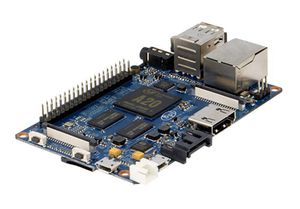

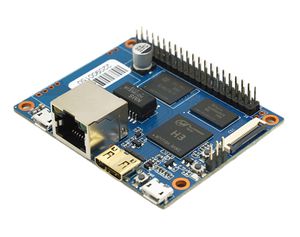
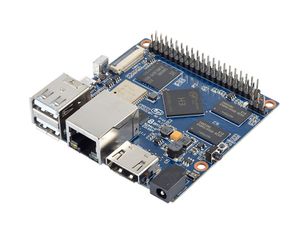

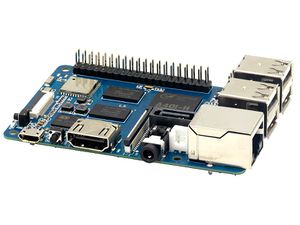
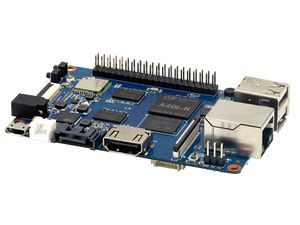


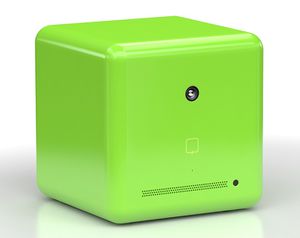
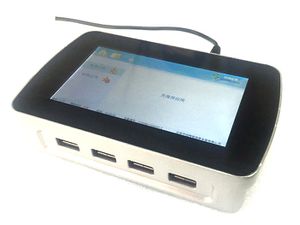
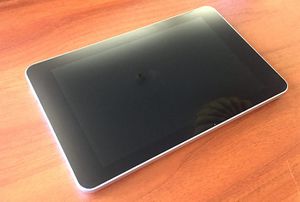
香蕉派 BPI-M1是一种商用卡片大小和低功耗的单板计算机,具有高性能全志A20双核处理器(1ghz)、1gb DDR3 SDRAM、千兆以太网、SATA、USB和HDMI连接。它可以运行多种操作系统,包括Android, Lubuntu, Ubuntu, Debian和Raspbian。
香蕉派 BPI-M1是香蕉派团队推出的第一款开源硬件,也是香蕉派累积销量最多的一款经典产品。现在还有很多商业客户应用在各种项目上。
关键特性
- 全志A20 Dual-core 1.0GHz CPU(A40i芯片可选)
- Mali-400 MP2 with Open GL ES 2.0/1.1.
- 1 GB DDR3 memory.
- 1x SATA interface.
- 1x Gigabit LAN
- 1x USB otg and 2x USB 2.0
- 1X MIC
- AV vide out
- HDMI out
- IR
- CSI camera interface
- DSI display interface
- 26 PIN gpio
开始使用
- 如何烧录镜像与启动系统 :快速上手 香蕉派镜像烧录与系统启动
- 使用BPI-M1 进行开发: 快速上手 香蕉派 BPI-M1
硬件
硬件接口示意
硬件规格
| Banana Pi BPI-M1硬件规格 | |||
| CPU | A20 ARM Cortex -A7 Dual-Core (option:allwinner A40i) | ||
| GPU | ARM Mali 400 MP2; Complies with OpenGL ES 2.0/1.1 | ||
| Memory | 1GB DDR3 | ||
| Network | 10/100/1000 Ethernet 8P8C (1000BASE-T) | ||
| Video Input | A CSI input connector allows for the connection of a designed camera module | ||
| Video Outputs | HDMI, CVBS, LVDS/RGB | ||
| Audio Outputs | 3.5mm jack and HDMI | ||
| Power Source | 5 volts DC via Micro USB or GPIO | ||
| USB 2.0 ports | 2 (direct from Allwinner A20 chip) | ||
| GPIO | GPIO, UART, I2C BUS, SPI BUS, WITH TWO CHIP SELECTS, CAN bus, ADC, PWM, +3.3V, +5V, GND | ||
| LED | Power Key & 8P8C | ||
| Storage | SATA 2.0, | ||
GPIO PIN 定义
Banana Pi BPI-M1 has a 26-pin GPIO header that matches that of the Model A and Model B Raspberry Pi. Following is the Banana Pi GPIO Pinout:
Note: 5V1,5V2 only support output,not support input
CSI Camera Connector specification:
CSI Camera Connector The CSI Camera Connector is a 40-pin FPC connector which can connect external camera module with proper signal pin mappings. The pin definitions of the CSI interface are shown as below. This is marked on the Banana Pi board as “CON1″.
| 40 PIN GPIO of Banana pi BPI-M1 | |||
| CSI GPIO Pin | Pin Name | GPIO | |
| CON1 P01 | LINEINL | ||
| CON1 P02 | LINEINR | ||
| CON1 P03 | VCC-CSI | ||
| CON1 P04 | ADC\_X1 | ||
| CON1 P05 | GND | ||
| CON1 P06 | ADC\_X2 | ||
| CON1 P07 | FMINL | ||
| CON1 P08 | ADC\_Y1 | ||
| CON1 P09 | FMINR | ||
| CON1 P10 | ADC\_Y2 | ||
| CON1 P11 | GND | ||
| CON1 P12 | CSI-FLASH | PH17 | |
| CON1 P13 | LRADC0 | ||
| CON1 P14 | TWI1-SDA | PB19 | |
| CON1 P15 | LRADC1 | ||
| CON1 P16 | TWI1-SCK | PB18 | |
| CON1 P17 | CSI-D0 | PE4 | |
| CON1 P18 | CSI0-STBY-EN | PH19 | |
| CON1 P19 | CSI0-D1 | PE5 | |
| CON1 P20 | CSI-PCLK | PE0 | |
| CON1 P21 | CSI-D2 | PE6 | |
| CON1 P22 | CSI0-PWR-EN | PH16 | |
| CON1 P23 | CSI-D3 | PE7 | |
| CON1 P24 | CSI0-MCLK | PE1 | |
| CON1 P25 | CSI-D4 | PE8 | |
| CON1 P26 | CSI0-RESET\# | PH14 | |
| CON1 P27 | CSI-D5 | PE9 | |
| CON1 P28 | CSI-VSYNC | PE3 | |
| CON1 P29 | CSI-D6 | PE10 | |
| CON1 P30 | CSI-HSYNC | PE2 | |
| CON1 P31 | CSI-D7 | PE11 | |
| CON1 P32 | CSI1-STBY-EN | PH18 | |
| CON1 P33 | RESET\# | ||
| CON1 P34 | CSI1-RESET\# | PH13 | |
| CON1 P35 | CSI-IO0 | PH11 | |
| CON1 P36 | HPR | ||
| CON1 P37 | HPL | ||
| CON1 P38 | IPSOUT | ||
| CON1 P39 | GND | ||
| CON1 P40 | IPSOUT | ||
LVDS \(LCD display interface\)
The LVDS Connector is a 40-pin FPC connector which can connect external LCD panel \(LVDS\) and touch screen \(I2C\) module as well. The pin definitions of this connector are shown as below. This is marked on the Banana Pi board as “CON2″.
| LVDS GPIO of Banana pi BPI-M1 | |||
| LVDS Pin | Pin Name | Multiplex Function Select | GPIO |
| Multi 1 | Multi 2 | ||
| CON2 P01 | IPSOUT\(5V output\) | ||
| CON2 P02 | TWI3-SDA | PI1 | |
| CON2 P03 | IPSOUT\(5V output\) | ||
| CON2 P04 | TWI3-SCK | PI0 | |
| CON2 P05 | GND | ||
| CON2 P06 | LCD0-IO0 | PH7 | |
| CON2 P07 | LCDIO-03 | PH12 | |
| CON2 P08 | LCD0-IO1 | PH8 | |
| CON2 P09 | LCD0-D0 | LVDS0-VP0 | PD0 |
| CON2 P10 | PWM0 | PB2 | |
| CON2 P11 | LCD0-D1 | LVDS0-VN0 | PD1 |
| CON2 P12 | LCD0-IO2 | PH9 | |
| CON2 P13 | LCD0-D2 | LVDS0-VP1 | PD2 |
| CON2 P14 | LCD0-DE | PD25 | |
| CON2 P15 | LCD0-D3 | LVDS0-VN1 | PD3 |
| CON2 P16 | LCD0-VSYNC | ||
| CON2 P17 | LCD0-D4 | LVDS0-VP2 | PD4 |
| CON2 P18 | LCD0-HSYNC | ||
| CON2 P19 | LCD0-D5 | LVDS0-VN2 | PD5 |
| CON2 P20 | LCD0-CS | ||
| CON2 P21 | LCD0-D6 | LVDS0-VPC | PD6 |
| CON2 P22 | LCD0-CLK | PD24 | |
| CON2 P23 | LCD0-D7 | LVDS0-VNC | PD7 |
| CON2 P24 | GND | ||
| CON2 P25 | LCD0-D8 | LVDS0-VP3 | PD8 |
| CON2 P26 | LCD0-D23 | PD23 | |
| CON2 P27 | LCD0-D9 | LVDS0-VN3 | PD9 |
| CON2 P28 | LCD0-D22 | PD22 | |
| CON2 P29 | LCD0-D10 | PD10 | |
| CON2 P30 | LCD0-D21 | PD21 | |
| CON2 P31 | LCD0-D11 | PD11 | |
| CON2 P32 | LCD0-D20 | PD20 | |
| CON2 P33 | LCD0-D12 | PD12 | |
| CON2 P34 | LCD0-D19 | PD19 | |
| CON2 P35 | LCD0-D13 | PD13 | |
| CON2 P36 | LCD0-D18 | PD18 | |
| CON2 P37 | LCD0-D14 | PD14 | |
| CON2 P38 | LCD0-D17 | PD17 | |
| CON2 P39 | LCD0-D15 | PD15 | |
| CON2 P40 | LCD0-D16 | PD16 | |
UART specification:
The jumper J11 is the UART interface. For developers of Banana Pi, this is an easy way to get the UART console output to check the system status and log message.
| Jumper J11 of Banana pi BPI-M1 | |||
| J11 Pin | Pin Name | Multiplex Function Select | GPIO |
| Multi 1 | Multi 2 | ||
| J11 Pin1 | TXD | UART0-TX | PB22 |
| J11 Pin2 | RXD | UART0-RX | PB23 |
The jumper J12 provides the power source including 3.3V and 5V. There is a pair of UART TX/RX signals output here.
| Jumper J12 of Banana pi BPI-M1 | |||
| J12 Pin | Pin Name | Multiplex Function Select | GPIO |
| Multi 1 | Multi 2 | ||
| J12 Pin1 | 5V | ||
| J12 Pin2 | 3.3V | ||
| J12 Pin3 | NC | IO-7 | PH5 |
| J12 Pin4 | RXD | UART7\_RX | PI21 |
| J12 Pin5 | NC | IO-8 | PH3 |
| J12 Pin6 | TXD | UART7\_TX | PI20 |
| J12 Pin7 | GND | ||
| J12 Pin8 | GND | ||
All GPIO define list:
资源
软件源代码
- Github Linux 源代码 : https://github.com/BPI-SINOVOIP/BPI-M1-bsp
- Android 4.4 source code
参考文档
- schematic diagram: google drive
- BPI-M1 DXF file download link : google drive
- BPI-M1 3D design file download link :google drive
- CE FCC RoHS : BPI-M1 CE,FCC,RoHS
- Arch linux wiki for BPI-M1:https://wiki.archlinux.org/index.php/Banana_Pi
- Nas for BPI-M1/BPI-M1+ : https://www.hackster.io/jeffbaocai/bananapi-pro-nas-0815dc?ref=platform&ref_id=8064_popular___&offset=3
- NetBSD/evbarm on Allwinner SoCs : https://wiki.netbsd.org/ports/evbarm/allwinner/#index1h1
- Gentoo for banana pi : https://wiki.gentoo.org/wiki/Banana_Pi_the_Gentoo_Way
- openSUSE for banana pi : https://en.opensuse.org/HCL:BananaPi
- How to booting from SSD using Lubuntu / Raspbian :https://bananapi.gitbooks.io/bpi-m1/content/en/howtobootingfromssdusinglubunturaspbian.html
- Building the cluster on BPI : https://www.hackster.io/Penguinfly/banana-pi-cluster-47d566
- Allwinner documents:
- allwinner chip online datasheet and documents: http://dl.linux-sunxi.org/
系统镜像
Android 4.4
- 2018-07-28 update android 4.4 LCD version image
- Features Map:http://wiki.banana-pi.org/M1_Image_Map
- Baidu Drive:https://pan.baidu.com/s/1DfSIiMvW_I-kFjTZMtcVsA
- Google Drive: https://drive.google.com/open?id=1qcH9baIhOphsDdlH_yBADuBiZsvrSKnt
- Forum pthtread :http://forum.banana-pi.org/t/bananapi-m1-m1p-r1-new-image-release-20180728/6357
- Release Date: 2018-07-26
- Baidu Drive: https://pan.baidu.com/s/1HErsANQ4PsnwQJ-tH0AdTg
- Google Drive:
Ubuntu Server
- 2018-7-28 update :Ubuntu Server16.04 HDMI Version Image Link:
- Features Map:http://wiki.banana-pi.org/M1_Image_Map
- Baidu Drive: https://pan.baidu.com/s/1GYH8oDK3T_WcUFn-0t9YmQ
- Google Drive: https://drive.google.com/open?id=13XTvWe90yvRdqNWiKCLZ0HcMgo33y2r6
- Forum pthtread :http://forum.banana-pi.org/t/bananapi-m1-m1p-r1-new-image-release-20180728/6357
- Release Date: 2018-07-26
- Baidu Drive: https://pan.baidu.com/s/1Tw_99XBZVOmKyavNxCXv3w
- Google Drive:
Debian Linux
- 2019-9-18 update. Debian 10 buster mate desktop with grub support (boot-2019.07 + kernel 5.1.1)
Armbian image
- Armbian Xenial and Armbian Jessie
- Image lownload link :https://www.armbian.com/bananapi/
OpenWRT
Officeal OpenWRT
- BPI-M1/BPI-M1+/BPI-R1 use A20 chip,so easy to run openwrt
- wiki : https://wiki.openwrt.org/toh/lamobo/r1
- openwrt support for allwinner :https://wiki.openwrt.org/doc/hardware/soc/soc.allwinner.sunxi?s[]=banana&s[]=pi
- image download : https://downloads.openwrt.org/chaos_calmer/15.05/sunxi/generic/uboot-sunxi-Lamobo_R1/
- opwrt for Allwinner Soc : https://wiki.openwrt.org/doc/hardware/soc/soc.allwinner.sunxi?s[]=banana&s[]=pi
BPI BSP for OpenWRT
- How to build OpenWRT image from github : https://bananapi.gitbooks.io/bpi-m1/content/en/howtobuildopenwrtimagefromgithub.html
FreeBSD
FreeBSD on Allwinner (sunxi) systems for banana pi
Banana pi as the official partner of Allwinner , must banana pi product use Allwinner chip design . such as A20/A31S/H3/H2+/A64/A83T , and FreeBSD have support many Allwinner . so easy to use on banana pi board.
- Allwinner A20 (sun7i), a dual-core Cortex-A7 BPI-M1/BPI-M1+/BPI-R1
- Allwinner A31 and A31s (sun6i), a quad-core Cortex-A7 BPI-M2
- Allwinner A64 (sun50i), a quad-core Cortex-A53 BPI-M64
- Allwinner A83T (sun8i), an octa-core Cortex-A7 BPI-M3
- Allwinner H3 (sun8i), a quad-core Cortex-A7 BPI-M2+/BPI-M2+ EDU/
https://wiki.freebsd.org/FreeBSD/arm/Allwinner
OpenSuse
- inmage and how to : https://bananapi.gitbooks.io/bpi-m1/content/en/opensuse.html
OpenMediaVault
- inmage and how to : https://bananapi.gitbooks.io/bpi-m1/content/en/openmediavault.html
Arch Linux
- inmage and how to : https://bananapi.gitbooks.io/bpi-m1/content/en/arch_linux.html
Gentoo Linux
- inmage and how to : https://bananapi.gitbooks.io/bpi-m1/content/en/gentoolinux.html
RaspBSD
- inmage and how to : https://bananapi.gitbooks.io/bpi-m1/content/en/raspbsdonbpi-m1.html
CentOS
- inmage and how to : https://bananapi.gitbooks.io/bpi-m1/content/en/centos7linuxforbpi.html
DietPi
- inmage and how to : https://bananapi.gitbooks.io/bpi-m1/content/en/dietpi.html
FreeBSD/NetBSD
- inmage and how to : https://bananapi.gitbooks.io/bpi-m1/content/en/freebsdnetbsd.html
Lakka TV
- Banana Pi M2+ with H3 chip
- Banana Pi M3 with A83T chip
- BPI-M1 and BPI-M1+ use A20 chip
- more about this : https://bananapi.gitbooks.io/bpi-m3/content/en/lakkatv.html
http://mirror.lakka.tv/nightly/
Simplenas
- simplenas image : https://simplenas.com/download/other/banana-pi-m1
